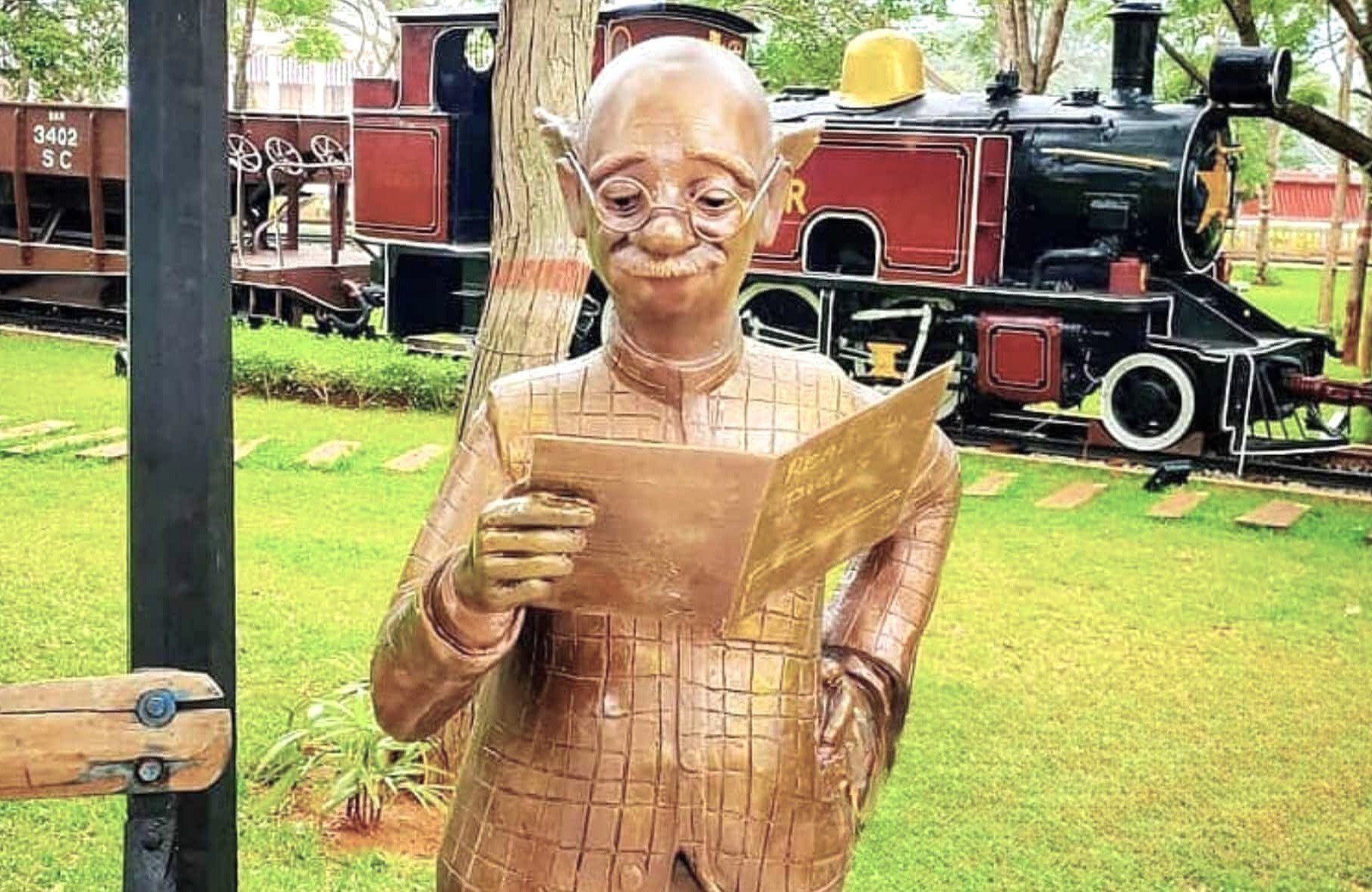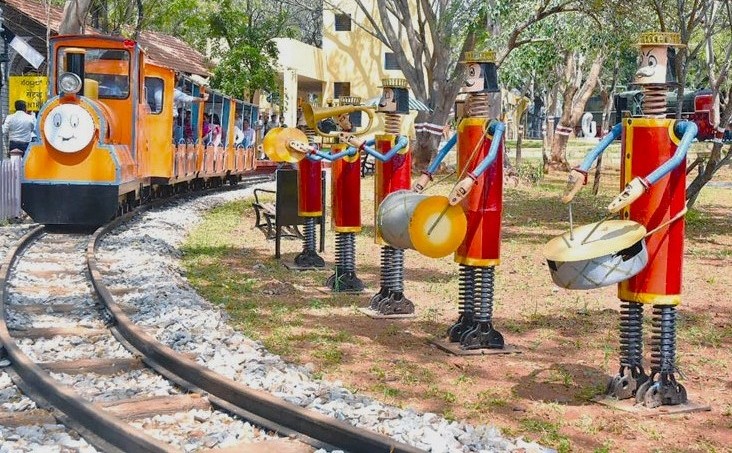Spirit of India
Railway Museum: Mysore
Discover Life Travel
EIR-21 Guinness World Record: Railway Museum Mysore
Railway Museum Mysore. This destination invites us to step back in time and immerse ourselves in the rich tapestry of India's railway heritage: The Railway Museum of Mysore serves as the cultural and historical heart of the state of Karnataka. The museum, formally established in 1979, shows us the evolution of the railway system and its profound impact on the region's development. The historical roots of this Indian railway heritage can be traced back to the first dynasty of the Mysore Kingdom. The Wadiyar Dynasty, known for their contributions to art, architecture, and infrastructure, played a pivotal role in the establishment of railway lines. The first steam locomotive journey in India took place on April 16, 1853, marking the beginning of a new era for transportation in the country. As we explore the museum, we witness the evolution of these majestic machines, from early steam engines to modern trains, each telling a story of innovation and teamwork that helped shape the nation’s transportation infrastructure.

Timeless Artifacts & Sacred Spaces: Railway Museum of Mysore
Railway Museum of Mysore. Within the museum, a treasure trove of vintage locomotives, rail carriages, and railway artifacts captivates our imagination. Each piece is a testament to the craftsmanship and technical ingenuity of its time. Most notably, we find the EIR-21, a steam locomotive that is part of the Guinness World Record for being the oldest operational steam engine. The museum meticulously preserves these artifacts, providing a peaceful atmosphere for reflection.
Ancient Mosaics: Impeccable Craftsmanship

The artistry found in the museum reflects the skilled craftsmanship involved in railway construction and design. Each locomotive and carriage tells a story of dedication and precision, with names like The Fairy Queen, known for its elegant design, standing as a prime example of the fusion of function with aesthetics. Throughout the decades, various artisans have contributed to the restoration and preservation of these vehicles, ensuring their legacy endures. The Heritage Gallery, opened in 1995, further enhances our appreciation for the craftsmanship that built the railway network, showcasing details that might otherwise be overlooked, a fascinating journey through time and technology.
Capturing the Magic: A Photographic Haven
In this stunning setting, the beautiful locomotives and exhibits provide endless opportunities for photography. The intricate details of the trains against the backdrop of lush greenery create an atmosphere that is both inspiring and memorable. You will find that capturing these moments becomes a delightful experience, allowing us to preserve the magic of our visit.
Mythological Associations
The rich history of the region is also deeply entwined with mythology. Characters like Vishnu and Krishna are revered, with their legends infusing the local culture. The museum reflects this spirituality through its exhibits, drawing connections between the advancements in railways and the myths that have shaped the identity of the area. The Shankha and Chakra, symbols associated with deities, often find their representation in local folklore, reinforcing the spiritual connection between the land and its history.
The Pulse of the Local Community

A vital part of the railway museum's charm is its role as a communal space. The surrounding community boasts a spirit of warmth and hospitality, welcoming us to explore and engage with their rich heritage. Locals take immense pride in their Indian railway history, often organizing family outings to the museum and participating in various community events that celebrate their cultural legacy. This connection fosters a lively atmosphere, allowing us to share in stories, traditions, and the historical significance that defines this extraordinary place. The museum regularly hosts special exhibitions featuring vintage photographs, memorabilia, and interactive displays that chronicle the evolution of Indian railways. A memorable morning in Mysore, lets go for chai.
Festivals of Devotion: Honouring the Sacred and the Divine
Throughout the year, various festivals at the Museum bring vibrant life and excitement to the area, with Dussehra standing out as the most prominent. Usually celebrated in September or October, Dussehra commemorates the victory of good over evil and attracts crowds who flock to witness the dynamic processions, traditional dances, and dazzling performances that fill the museum grounds and surrounding streets. Central to these festivities is the story of Rama, the heroic prince from the epic Ramayana. Rama is revered as an ideal figure whose triumph against the demon king Ravana symbolizes righteousness, bravery, and virtue. His story is deeply intertwined with the festival and celebrates his victory and principles he represents.
Resilience and Renewal: Overcoming Adversity’s Challenges

The museum’s history is marked by resilience, especially in the face of adversity. During the 2005 floods, the museum sustained significant damage, threatening its valuable artifacts and legacy. In response, local volunteers quickly mobilized, working tirelessly to clean the premises and restore damaged exhibits. Their determination and teamwork ensured the preservation of the museum’s rich heritage. This powerful community effort not only saved priceless collections but also strengthened the bond among residents, highlighting their shared commitment to cultural preservation. Such unity transformed a moment of crisis into an inspiring testament to the area’s enduring spirit, ultimately making the museum stronger and more cherished than before.
Urban Legends: Strange Sightings, Myths and Mysteries
The folklore surrounding the railway system adds to the mystique of the site. Locals tell tales of ghostly figures that are said to appear near the old locomotives, hinting at the spirited lives of railway workers from a bygone era. There are stories of mysterious sounds echoing through the night, captivating those who frequent the museum after dark. These legends enrich our understanding of the area’s history and invite us to ponder the mysteries that linger within its walls.
Travel Beyond Ordinary: Open the Door to Adventure

As we begin our tour, you will find yourself immersed not only in the museum’s intriquing displays but also in its deeper connections to the culture and heritage of the region. Each exhibit tells a story, revealing how railways have shaped the daily lives and traditions of people in Mysore and beyond. This journey offers more than just a look at trains and artifacts - it invites us to appreciate the intricate relationship between technology and tradition. As you explore, you’ll discover that the museum serves as both a historical archive and a living testament to Mysore’s vibrant community spirit, bridging past and present in meaningful ways. The welcoming atmosphere and knowledgeable guides make every visit memorable.
Symphony of Generosity: Offerings from Wanderers to Residents
The interchange between tourists and the local population yields numerous benefits. Our engagement stimulates the economy, allowing artisans to thrive while providing us opportunities to connect with authentic cultural expressions. This symbiotic relationship enriches our experience and fosters lasting memories, highlighting the importance of community spirit.